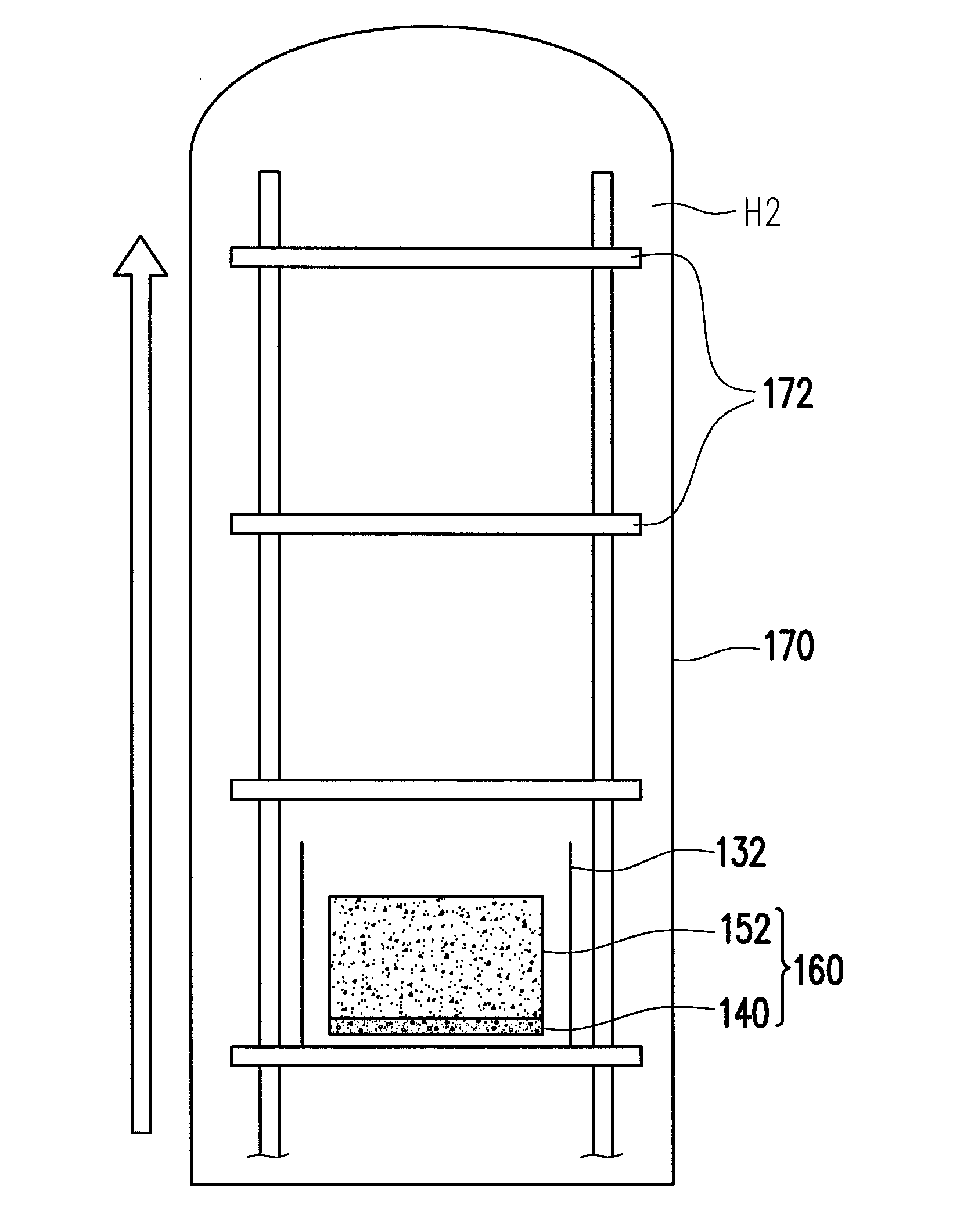Method for fabricating solar cell
a solar cell and solar energy technology, applied in the field of solar energy fabrication methods, can solve the problems of large waste of polysi materials, and achieve the effect of reducing costs
- Summary
- Abstract
- Description
- Claims
- Application Information
AI Technical Summary
Benefits of technology
Problems solved by technology
Method used
Image
Examples
Embodiment Construction
[0028]Descriptions of the invention are given with reference to the exemplary embodiments illustrated with accompanied drawings, wherein same or similar parts are denoted with same reference numerals. In addition, whenever possible, identical or similar reference numbers stand for identical or similar elements in the figures and the embodiments.
[0029]FIG. 1A to FIG. 1I illustrating a method of fabricating a solar cell 160 according to an exemplary embodiment of the present invention. The method is performed on a conveyer belt 130 continuously. Referring to FIG. 1A, a first surface S1 of an aluminum foil 110 is coated with a phosphorous (P) layer 120 mixed with a plurality of fine graphite powders 122. A material of the P layer 120, for instance, includes red phosphorous (rP) powders, so the P layer 120 actually contains red phosphorous and graphite powders. In the exemplary embodiment, the aluminum foil 110 is 4 microns thick (i.e. 4 micrometers), for example.
[0030]Referring to FIG....
PUM
| Property | Measurement | Unit |
|---|---|---|
| thick | aaaaa | aaaaa |
| thick | aaaaa | aaaaa |
| thick | aaaaa | aaaaa |
Abstract
Description
Claims
Application Information
 Login to View More
Login to View More - R&D
- Intellectual Property
- Life Sciences
- Materials
- Tech Scout
- Unparalleled Data Quality
- Higher Quality Content
- 60% Fewer Hallucinations
Browse by: Latest US Patents, China's latest patents, Technical Efficacy Thesaurus, Application Domain, Technology Topic, Popular Technical Reports.
© 2025 PatSnap. All rights reserved.Legal|Privacy policy|Modern Slavery Act Transparency Statement|Sitemap|About US| Contact US: help@patsnap.com



